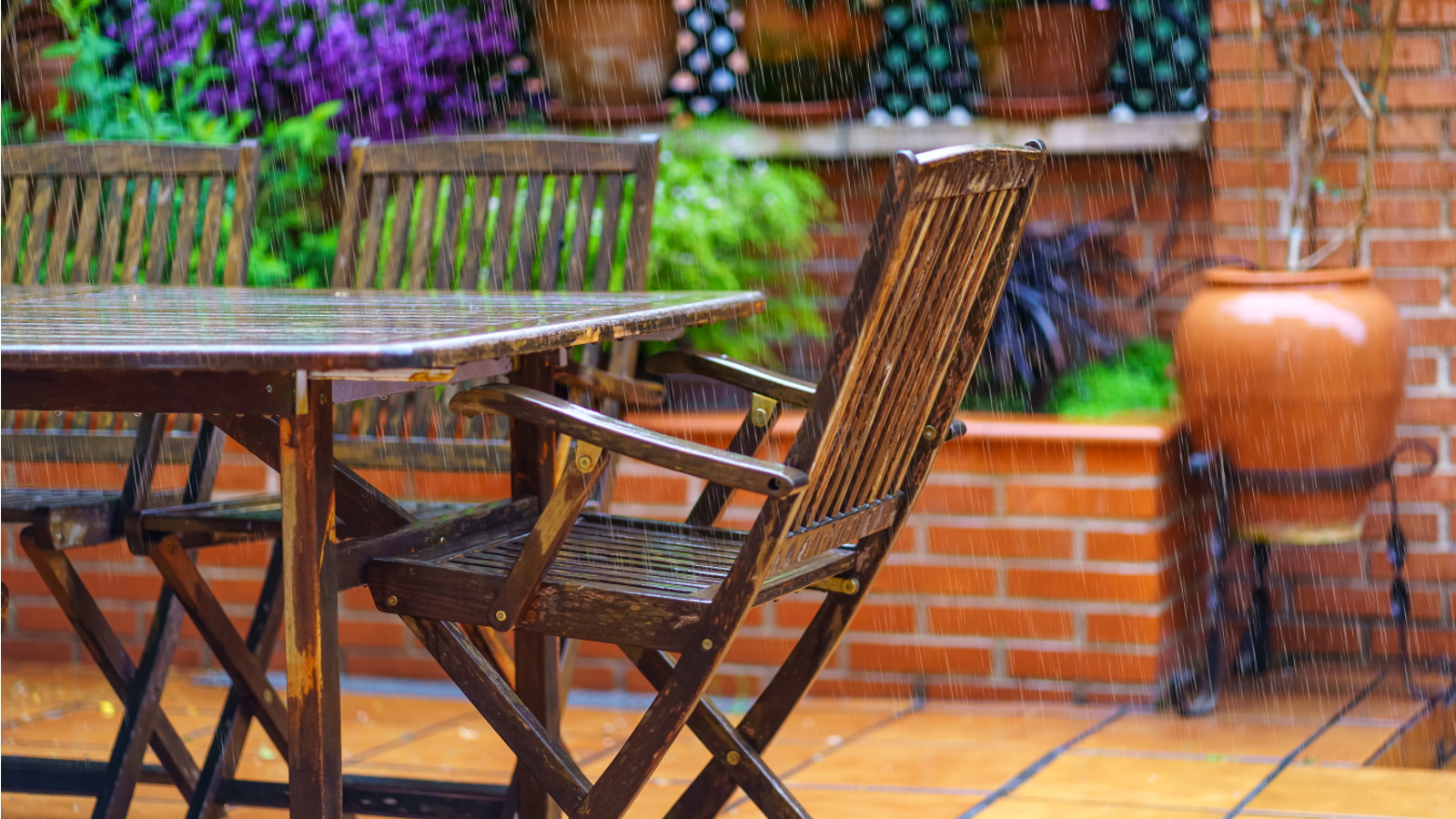
When you're shopping for the best outdoor furniture, you need to take a few things into consideration - not only if it suits your space or complements your aesthetic, but also if it can withstand the weather.
Rain is inevitable and not all furniture is fit to sit in it. It can be a strenuous task to move your furniture in and out as you use it, but one that will prove beneficial for keeping your outdoor furniture in good condition. 'Non-resistant materials may suffer from rotting, rusting, and mold. For example, untreated metal can rust, while natural wood may warp or rot when exposed to excessive moisture,' says Shawn Zar, furniture expert at Superior Seating.
Whether furniture can be left to become wet will depend on the material it is made from, so we've asked the experts to tell us more about which furniture is safe to leave in the rain.
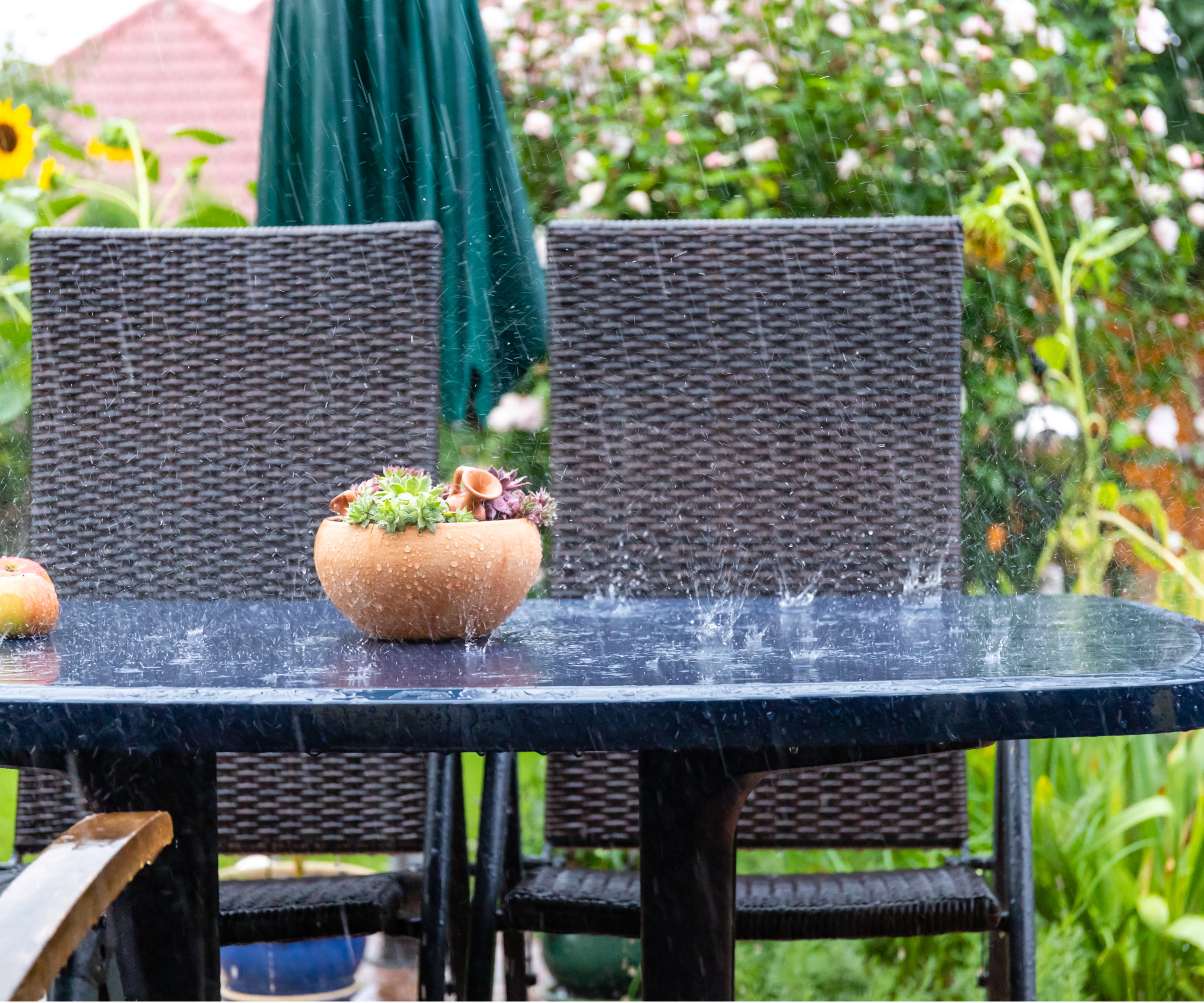
Can you leave outdoor furniture in the rain?
Not all outdoor furniture is fit for leaving in the rain and it could cause damage if left exposed to the elements. We take a look at which types can be left outside, and which to keep dry.
Wooden furniture
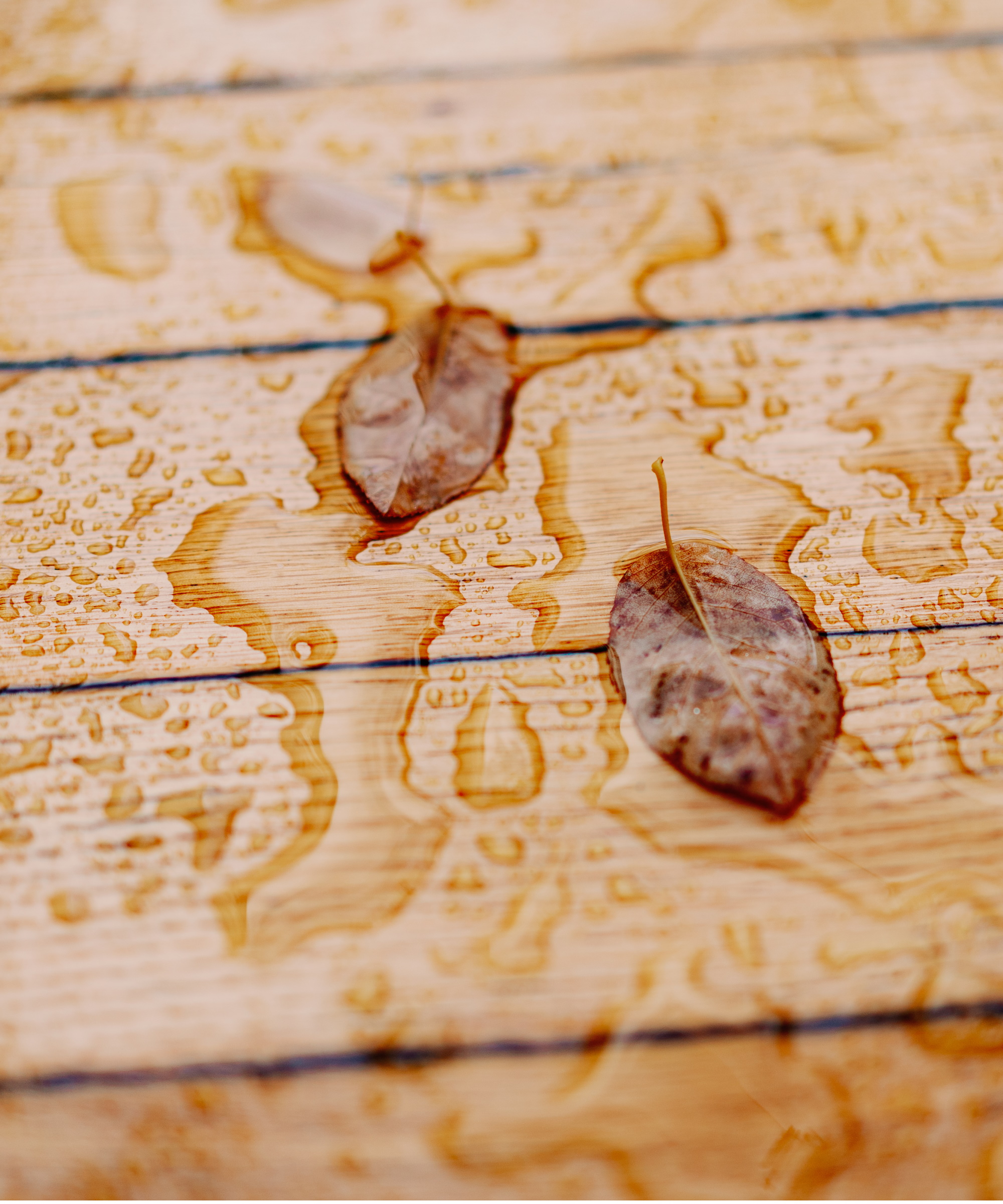
A lot of outdoor furniture is made from wood due to its durability. It is often found on dining sets and coffee tables, helping to create spaces for socializing and hosting.
There are some types of wood that are better in the rain than others and many furniture experts believe teak is the best wood for outdoor furniture.
'Teak should always be the first choice when choosing outdoor furniture due to its durability and weather resistance,' says Chris Putrimas, CEO of Teak Warehouse.
'Teak wood is a very stable timber with a high oil and rubber content, creating a built-in water repellent that makes teak furniture virtually immune to rotting,' he adds.
The properties Chris describes makes teak good for outdoor furniture. Although, take care in warmer weather to protect your teak furniture from bleaching in the sun.
Other woods that won't become damaged by rain exposure include cedar and ipe.
Plastic furniture
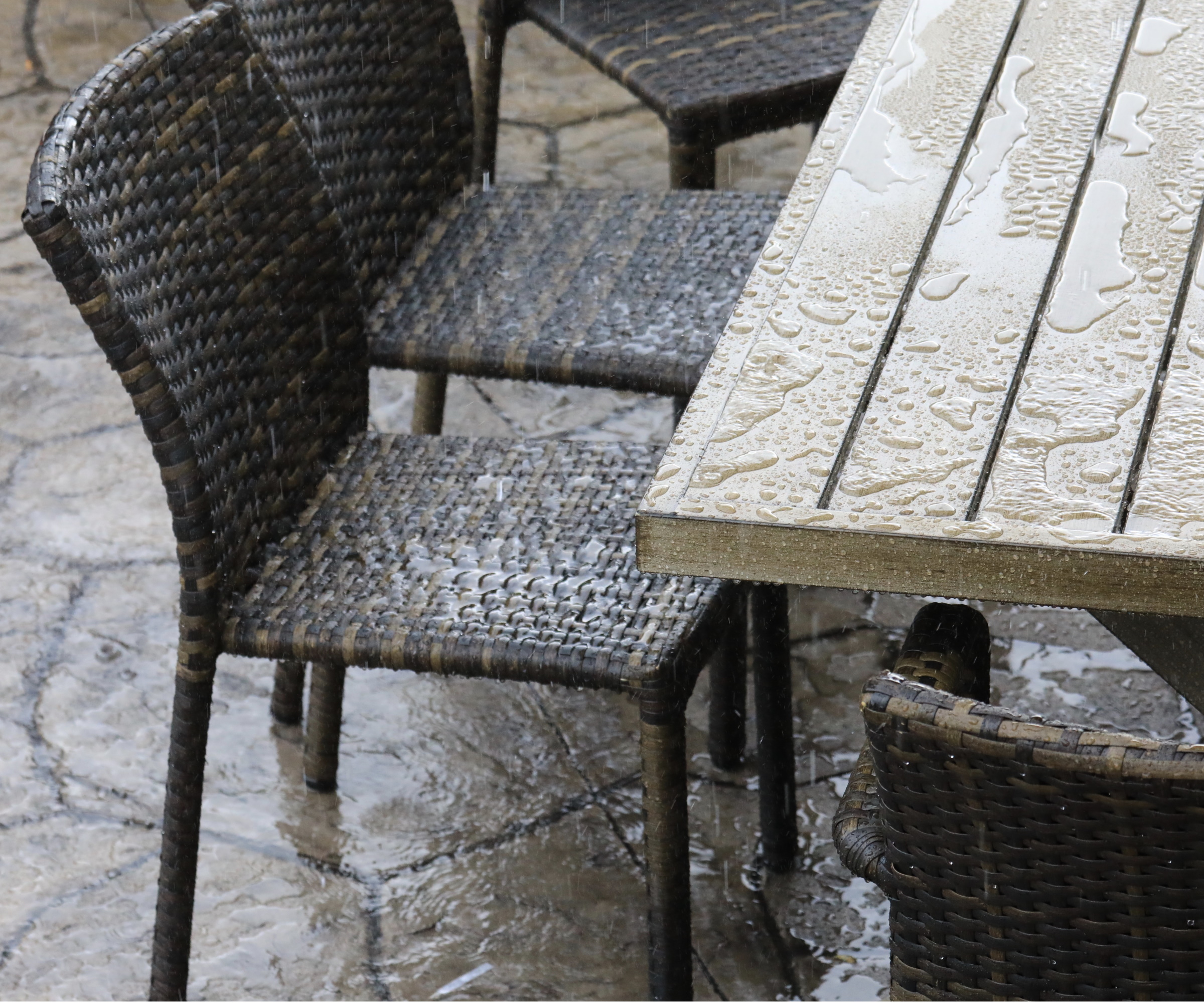
The rattan and wicker outdoor furniture trend is one that remains popular thanks to its timeless texture. It's not uncommon for pieces in this style to be made from plastic rather than wood, and there's a good reason for it.
'All-weather wicker and high density polyethylene (HDPE) are top materials for rain-resistant outdoor furniture. These can tolerate moisture without getting damaged,' says Artem Kropovinsky, interior designer and founder of Arsight in New York City.
HDPE is a type of plastic that is highly durable and strong. It can cope well with nearly all weather and will withstand rain without damage. Often furniture will be advertised as polyrattan which is likewise made from highly durable plastic in a woven style.
There are also lots of polyvinyl chloride (PVC) wicker pieces on the market. These are equally durable in the rain but are more easily scratched and dented than HDPE furniture.
Soft furnishings
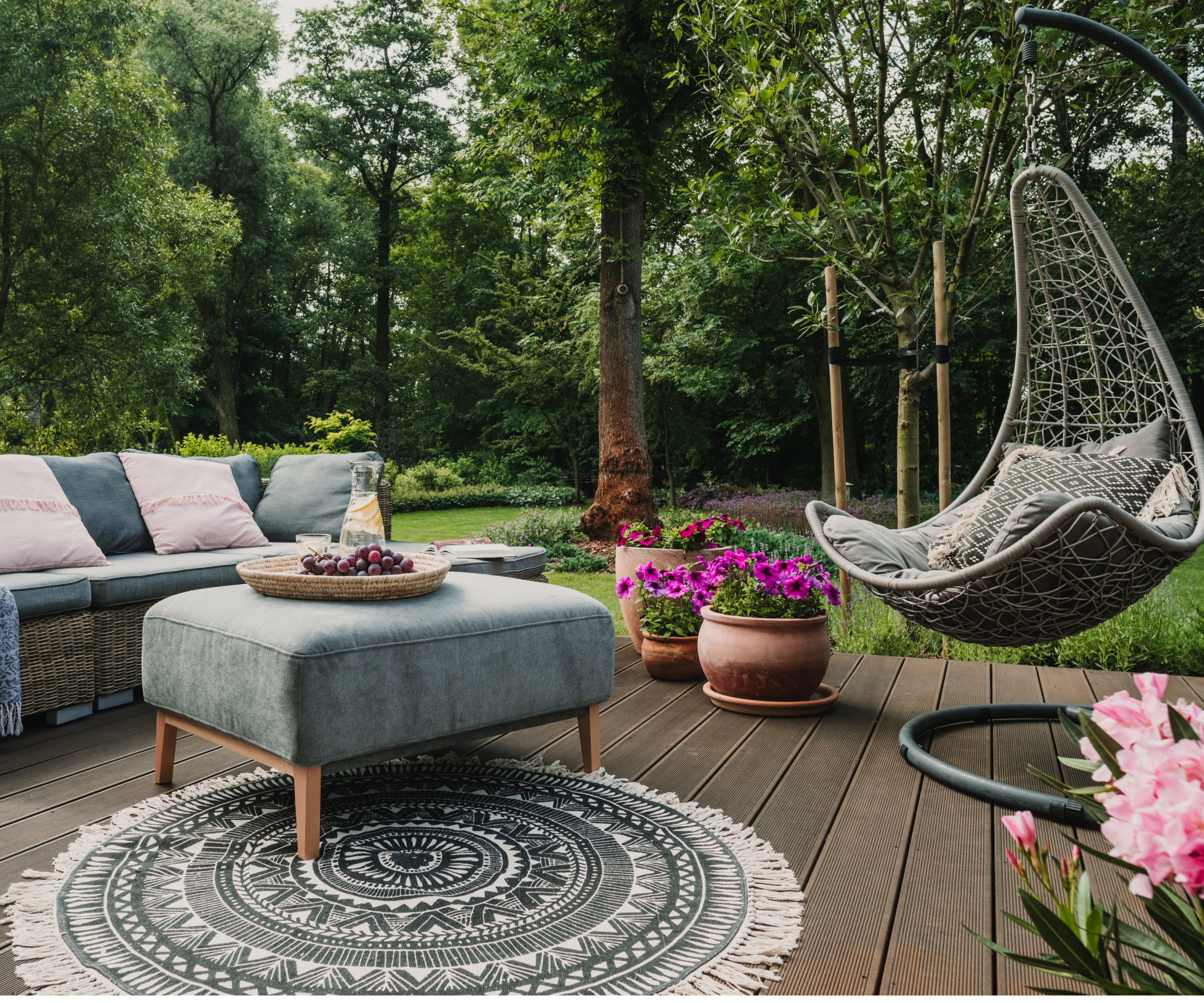
Throw pillows can transform your outdoor space with soft touches, bringing the indoors out. Something to be aware of if you do opt for soft outdoor furnishings is that they might need to be brought inside when showers come down.
'Soft furnishings not particularly designed for outdoors should be protected from rain,' says Artem. 'Even water-resistant fabrics benefit when covered or stored - this extends their lifespan,' he adds.
That's not to say you can't leave waterproof soft furnishings outdoors, such as lounge cushions, but you should take care to prevent them from becoming rain damaged. 'You can leave your cushions out in the rain but it’s important to stand them upright so the water can drain out of them if they become saturated,' says Chris Putrimas.
If you do choose to leave soft furnishings outdoors, they will likely become dirty. It's therefore a good idea to clean outdoor cushions occasionally to prolong their lifespan.
If you have decorated your outdoor space with things like outdoor rugs, take note of its material. If it's a cloth fabric, like cotton or linen, it may become moldy when wet and it will be best to bring it inside when it starts to rain. Once again, it will be beneficial to clean an outdoor rug to keep it fresh.
Metal furniture
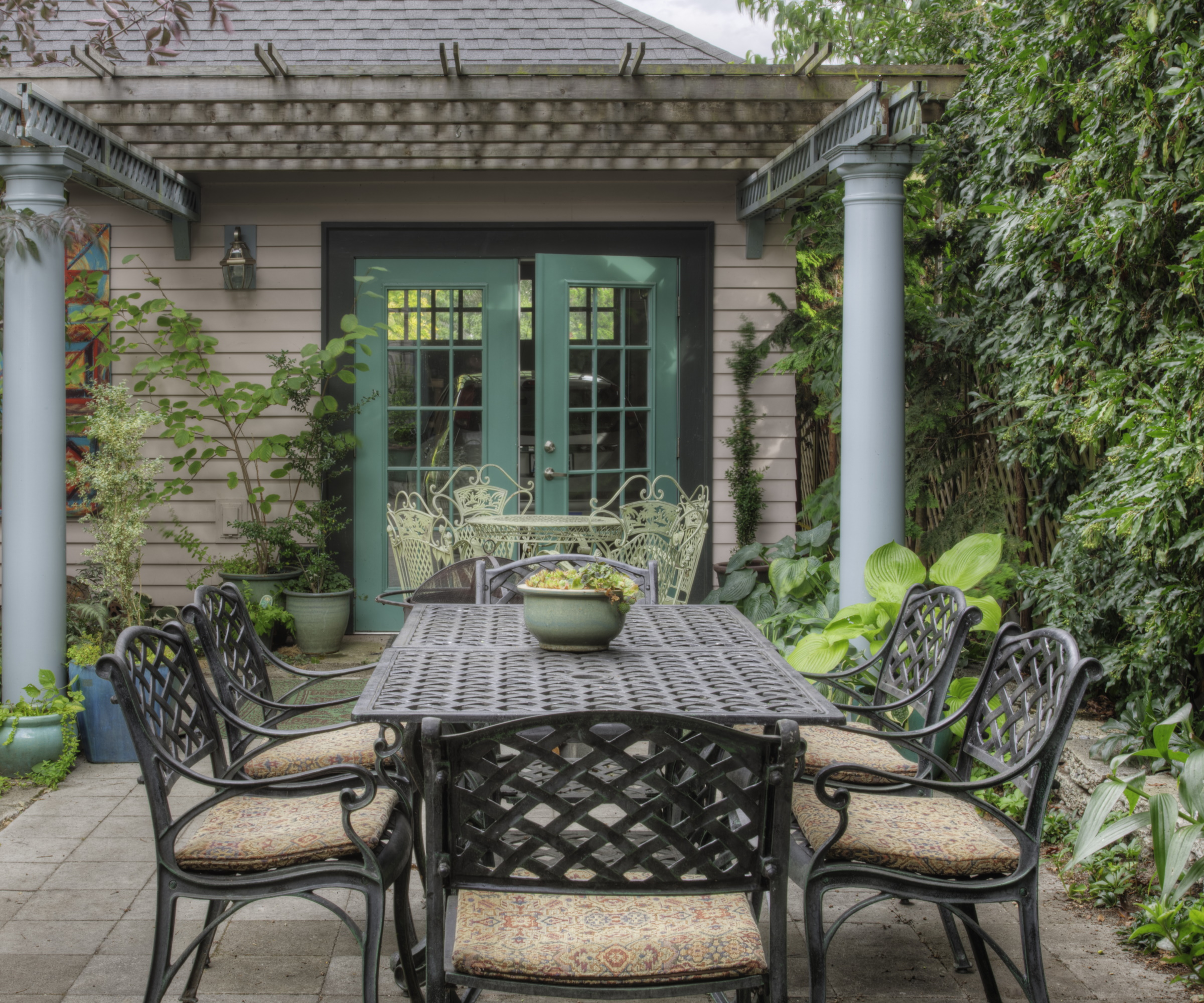
Metal is another popular material used for outdoor furniture to create sleek, bold looks. It also doesn't soak up moisture and can be quite easy to clean. But which metal is the best for the rain?
Some metals are more prone to rust than others, as exposure to wet creates an orange-brown substance that corrodes metal surfaces.
'Lots of outdoor furniture often come with metal frames made of stainless steel or aluminium, which are great because they resist weather and don't rust,' says Shawn Zar.
Stainless steel and aluminium are less likely to rust from rain, but it's still wise to clean them to keep them in pristine condition.
If you happen to have outdoor pieces or décor made from metals such as iron or copper, they're more likely to become damaged in the rain and will benefit from being sheltered to stay dry.
Shop rainproof outdoor furniture
The graceful curves of the Shorwell Garden Sofa are hand constructed from two of garden furniture’s best materials; teak and synthetic rattan.
This white metal perogla has an adjustable roof so you can open it to let sunlight in and close it to keep dry in the rain. Easy to install yourself.
Thick and comfortable to sit on, this water-repellent textile is soft enough for indoor use, while being durable enough to weather the elements.
FAQs
How do you rainproof outdoor furniture?
You can rainproof your outdoor furniture in a number of ways. For example, by treating the furniture.
'To rainproof furniture, apply sealants on wood. For metal, use rust-proof coatings. Protective covers add another barrier,' says Artem Kropovinsky, interior designer and founder of Arsight in New York City.
You can also use protective covers, like these patio furniture covers from Amazon, to place over your furniture and keep it dry when it rains.
How do you repair furniture from rain damage?
Repairing furniture from rain damage will depend on the material and extent of the damage.
'Cleaning and mild repairs may suffice for synthetic materials. Aluminium furniture can often be touched up with paint, for example,' says Shawn Zar, furniture expert at Superior Seating.
'For severe damage, professional refurbishment or replacement might be necessary,' he adds.
Not all outdoor furniture is fit to be left in the rain. The experts have enlightened us about which materials can withstand being wet and which you should consider moving indoors when rain starts to fall. Make sure to also avoid these outdoor furniture mistakes when on the hunt for new pieces to add to your backyard.







